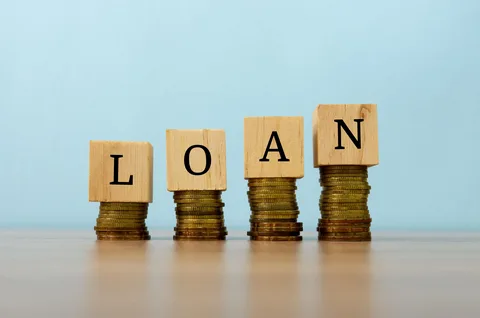What is a loan in simple words

Forms of lending
There are many classifications of loans. For example, if you divide loans by source of financing, you can highlight the following.
International
Provided by international organizations such as the International Monetary Fund or the World Bank. Issued for the development of countries, assistance in crisis situations, etc.
State
They are issued by the state within the country, for example, for the development of large infrastructure projects, national programs, construction of social facilities.
Commercial
They are also called commodity. In this case, the seller company gives the buyer a payment deferment, while giving him the goods. And the buyer pays in installments within the agreed time frame.
Bank
The most common form of lending, it is the one that is most often encountered in everyday life. In this case, banks lend money to companies and individuals, and they return the money with interest.
Types of bank loans
In short, there are several types of lending, and each of them is intended for different purposes. Let's list the most popular loans that banks issue to ordinary citizens.
Consumer
It is usually taken to buy goods and services. You can spend this money on any purpose: large purchases, paying bills, vacations, and others.
Mortgage
It is taken specifically to buy real estate. Usually the loan amount is quite large, so the term can be up to 30 years. Mortgage interest rates are lower than consumer loans.
Car loan
Suitable for buying a car. Usually its amount and term are shorter than those of a mortgage loan.
Education loan
With its help, you can pay for tuition at any accredited university or college for basic educational programs.
Loan refinancing
This is a way to close loans in other banks and get more comfortable conditions. For example, you can apply for refinancing in Sberbank, turn several loans into one and reduce monthly payments and the interest rate.
What other types of loans are there
Loans can be secured or unsecured. For unsecured loans, the bank has no additional guarantees that you will repay the loan, so the rates on them are higher. And secured loans give the bank confidence that it will return the money even if the borrower stops making payments. There are several types of loan security, for example, collateral, surety, or participation of a co-borrower.
Collateral is when the loan is backed by some property. And if you stop paying on the loan, the bank will have to sell this property to get the money back. For example, the collateral for a mortgage is an apartment purchased with this loan, and the collateral for a car loan is a car.
The guarantor will repay the bank for you if you do not do so. But then he can demand that you reimburse him for the costs.
And the co-borrower takes out a loan together with you and bears the same responsibility to the bank. Usually, the co-borrower is the spouse of the main borrower.
What you need to get a loan
For different loans, banks put forward different requirements for the borrower. Here are the most important parameters.
Age
To get a loan, you must be over 18 years old. This is due to the fact that, by law, minors cannot enter into legally binding transactions.
The bank wants to be sure that you will be able to pay back the money, so you must have a regular source of income. Credit history The bank checks your credit history to find out how you have previously repaid loans. With a good credit history, the chances of getting a loan are higher. If you have never taken out loans or used credit cards, you have a zero credit history. But this will not prevent you from getting a loan from the bank: it is more important to have a stable income. What is important to pay attention to when applying for a loan Before taking out a loan, weigh all the pros and cons. Determine the purpose of the loan and the required amount. Calculate how much money you can give to the bank each month and for how long you can take on these obligations. After that, choose the bank that offers the most favorable conditions for you.
- Arts
- Business
- Computers
- Jogos
- Health
- Início
- Kids and Teens
- Money
- News
- Recreation
- Reference
- Regional
- Science
- Shopping
- Society
- Sports
- Бизнес
- Деньги
- Дом
- Досуг
- Здоровье
- Игры
- Искусство
- Источники информации
- Компьютеры
- Наука
- Новости и СМИ
- Общество
- Покупки
- Спорт
- Страны и регионы
- World


